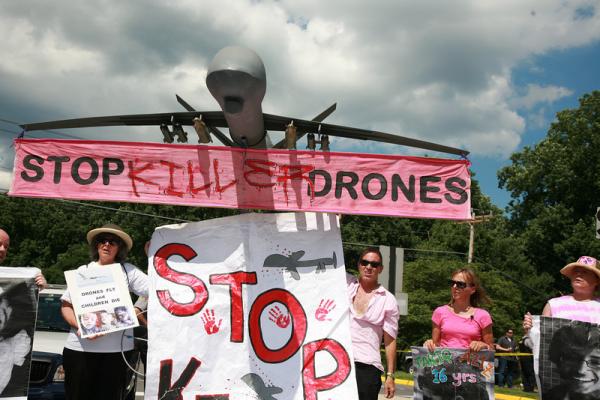On May 23, President Obama gave a major address from the National Defense University, in which he personally acknowledged for the first time the U.S. government’s killing of four Americans — along with scores of others — under its program of assassination by remotely controlled drones. I was able to watch this televised speech from the privileged vantage of a federal prison on the last day of a sentence resulting from my protest of drones operated from Whiteman Air Force Base in Missouri.
Over the previous six months in the Federal Prison Camp at Yankton, S.D., I had watched from afar as the discussion on drone warfare emerged from the fringe and into the mainstream. Fellow prisoners brought me clippings on the subject from their local newspapers and kept me apprised of what they heard on the evening news. The American people seemed to be just awakening to the reality and consequences of wars being fought and assassinations carried out by unmanned but heavily armed planes controlled by combatants sitting at computer screens at stateside bases far from the conflict.
Read the Full Article

